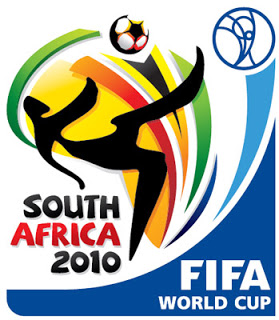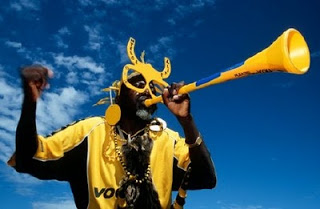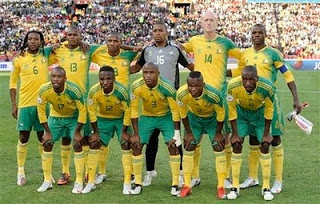
It is not often that we do this here at Walker Sports, but this was too interesting/amazing of a story to pass up. Thanks to Les Carpenter over at Yahoo Sports, we have gained access to an amazing village located in the remote corners of South Africa. With all the lights of the world focused on the RSA, it appears that the town of Orania has managed to remain in the shadows. And if it is up to the 700 residents, they will keep it that way.
ORANIA, South Africa - You come because there have been stories. Because around the World Cup the talk has been about peace and togetherness and the vanquishing of old racial wounds in the hope that the world’s arrival might stimulate new solutions. And you hear of a place that wants none of that. A place where white and black can’t live side-by-side in the rainbow nation. A place settled by the old South Africa who couldn’t cope with the new South Africa.
And you wonder why such a place should exist at all.
So you drive early one morning from Johannesburg, long before the sun climbs into the sky. You go past the flat-topped hills of mining country, through dusty towns and then across the long, open African savannah spotted with acacia trees until five hours later, near the banks of the Orange River, you find Orania.
And yes, it is true. In a country 80 percent black, there is a town that has made itself 100 percent white. Determined to preserve the Afrikaner culture 20 years after the fall of apartheid.
On the surface, Orania seems like a normal village. It has a grocery store, a gas station and a small bookstore that sells town T-shirts. A woman at a desk in the bookstore smiles and asks you to sign a guestbook. The primary language is Afrikaans, not English. The town’s public relations director, a former physician named John Strydom, comes out and shows a video. On the screen, children ride bicycles and the narrator explains that “there is a place where children can still have a comfortable childhood” and “residents can walk without looking over their shoulder.”
And it is clear that without even mentioning the words, this is all about black and white.
Driving around Orania, Strydom points out all the sights: the new houses built with bales of straw for insulation and solar panels on the roofs, the radio station, the small but lavish hotel and gleaming spa that overlook the river. He also explains the criteria for buying a house in Orania: one must submit an application, promise to uphold the Afrikaner culture and be approved by an administrative board.
“We can choose who lives here,” he says bluntly.
When asked if that was restricted by race he replied: “Most people in South Africa wouldn’t want to come here if they are black.”
Once the Afrikaners controlled South Africa, often brutally; this, despite the fact they were a white minority in a country that is predominately black. In the 1940s, they invented apartheid as an official form of segregation and ran the country almost as a dictatorship until black uprisings and the world’s scorn broke that rule. When Nelson Mandela was released from prison in 1990, it was only a matter of time before Afrikaner rule was over.
This is when a missionary named Carel Boshoff, the son in law of Hendrick Frensch Verwoerd, the architect of apartheid, banded with a group of 40 families to buy a mostly abandoned government construction camp and turn it into Orania. From the beginning, the idea was to separate. Orania had its own flag and its own currency (the ora, the first three letters of the town’s name) and set out to build something self-sustaining. Now, the 700 or so residents of Orania live as if it is their own country.
In fact, when asked who he considers to be his president, Boshoff’s son Carel (IV), who is now the community’s leader rambles for a moment, talking about how all people see government in different ways. When pressed on the question he finally says, “Right here,” and points to the ground at his feet.
Carel (IV) is an intellectual man, with large glasses and wavy long hair. He could be a young radical in Amsterdam if he wasn’t here in this small farming town explaining why he wants an Afrikaner state. He likes to talk in concepts and enjoys the show about international politics he hosts every week on the radio station.
He picks his words carefully but the community’s philosophy spills out nonetheless. Since the Afrikaner is white in heritage then the culture that is preserved must be white as well. The people of Orania don’t have anything against black people, he says, they just don’t share a culture. And if they don’t share a culture then they shouldn’t be living together.

In order to buy a house in Orania, one must submit an application and promise to uphold Afrikaner culture. (Photo by Alan Springer/Yahoo) Mostly Orania taps into white fear. Carel (IV) speaks a lot about how black rule has forced Afrikaners out of work because of Affirmative Action programs designed to get blacks jobs. An experienced white engineer could suddenly become a technical assistant to an inexperienced black employee, he says.
He also talks a lot about violence in other parts of South Africa. People in cities such as Johannesburg live behind giant walls and electric fences. In more rural areas, a panic has risen about what locals call “farm killings” in which young blacks have murdered a few Afrikaner farmers. The most notable was the killing of white supremacist Eugene TerreBlanche, a man who has advocated for several white republics in the country and was beaten to death by two of his black workers over a wage dispute.
“Very few people coming here are not affected by crime,” Carel (IV) says. “They have been robbed or hijacked or something. It affects their mindsets.”
South Africa is quickly becoming a failed state, Carel (IV) says. Any thought the World Cup is going to bring unity and help people confront two decades of growing pains is ridiculous, he says. The country’s future, with what he calls “corruption” in the mostly black African National Congress, is bleak.
“There’s no reason a country as diverse as South Africa should be united and together,” he says.
The best plan, he adds, is to “stand out of the tension.”
And yet that is the misfortune of Orania, this fact it wants to step back from the fight to build South Africa. It is a beautiful town with imaginative people, like Carel (IV)’s nephew, also named Carel who is a student in Pretoria, who loves the idea of the World Cup and yet dreams of returning to Orania.
“We’re building something for ourselves here,” he says.
But why? Why not for the country? Why hide a spectacular hotel and a spa on the edge of the river and not share it with the rest of South Africa? All around the country there is growth and building, even among the “tension” as Carel (IV) calls it. Just a few days ago in the black Johannesburg township of Soweto, a group of black residents gathered at a restaurant for the monthly meeting of their saving group. Together, they said, they give whatever money they want to put away to one member who deposits it in the bank. Then when enough has been saved to buy a car or a house or pay for school they can pull it out. The group serves as their support.
Imagine putting the saving group together with the Orania ingenuity that erected energy-efficient houses made with straw inside? What a country this could become.
On the drive back to Johannesburg and the World Cup that has come to be about unity, it was so easy to see.
The sadness as night fell and an autumn storm rumbled across the savannah was that Orania could not.
By Les Carpenter, Yahoo! Sports
ORANIA, South Africa - You come because there have been stories. Because around the World Cup the talk has been about peace and togetherness and the vanquishing of old racial wounds in the hope that the world’s arrival might stimulate new solutions. And you hear of a place that wants none of that. A place where white and black can’t live side-by-side in the rainbow nation. A place settled by the old South Africa who couldn’t cope with the new South Africa.
And you wonder why such a place should exist at all.
So you drive early one morning from Johannesburg, long before the sun climbs into the sky. You go past the flat-topped hills of mining country, through dusty towns and then across the long, open African savannah spotted with acacia trees until five hours later, near the banks of the Orange River, you find Orania.
And yes, it is true. In a country 80 percent black, there is a town that has made itself 100 percent white. Determined to preserve the Afrikaner culture 20 years after the fall of apartheid.
On the surface, Orania seems like a normal village. It has a grocery store, a gas station and a small bookstore that sells town T-shirts. A woman at a desk in the bookstore smiles and asks you to sign a guestbook. The primary language is Afrikaans, not English. The town’s public relations director, a former physician named John Strydom, comes out and shows a video. On the screen, children ride bicycles and the narrator explains that “there is a place where children can still have a comfortable childhood” and “residents can walk without looking over their shoulder.”

And it is clear that without even mentioning the words, this is all about black and white.
Driving around Orania, Strydom points out all the sights: the new houses built with bales of straw for insulation and solar panels on the roofs, the radio station, the small but lavish hotel and gleaming spa that overlook the river. He also explains the criteria for buying a house in Orania: one must submit an application, promise to uphold the Afrikaner culture and be approved by an administrative board.
“We can choose who lives here,” he says bluntly.
When asked if that was restricted by race he replied: “Most people in South Africa wouldn’t want to come here if they are black.”
Once the Afrikaners controlled South Africa, often brutally; this, despite the fact they were a white minority in a country that is predominately black. In the 1940s, they invented apartheid as an official form of segregation and ran the country almost as a dictatorship until black uprisings and the world’s scorn broke that rule. When Nelson Mandela was released from prison in 1990, it was only a matter of time before Afrikaner rule was over.
This is when a missionary named Carel Boshoff, the son in law of Hendrick Frensch Verwoerd, the architect of apartheid, banded with a group of 40 families to buy a mostly abandoned government construction camp and turn it into Orania. From the beginning, the idea was to separate. Orania had its own flag and its own currency (the ora, the first three letters of the town’s name) and set out to build something self-sustaining. Now, the 700 or so residents of Orania live as if it is their own country.
In fact, when asked who he considers to be his president, Boshoff’s son Carel (IV), who is now the community’s leader rambles for a moment, talking about how all people see government in different ways. When pressed on the question he finally says, “Right here,” and points to the ground at his feet.
Carel (IV) is an intellectual man, with large glasses and wavy long hair. He could be a young radical in Amsterdam if he wasn’t here in this small farming town explaining why he wants an Afrikaner state. He likes to talk in concepts and enjoys the show about international politics he hosts every week on the radio station.
He picks his words carefully but the community’s philosophy spills out nonetheless. Since the Afrikaner is white in heritage then the culture that is preserved must be white as well. The people of Orania don’t have anything against black people, he says, they just don’t share a culture. And if they don’t share a culture then they shouldn’t be living together.

In order to buy a house in Orania, one must submit an application and promise to uphold Afrikaner culture. (Photo by Alan Springer/Yahoo) Mostly Orania taps into white fear. Carel (IV) speaks a lot about how black rule has forced Afrikaners out of work because of Affirmative Action programs designed to get blacks jobs. An experienced white engineer could suddenly become a technical assistant to an inexperienced black employee, he says.
He also talks a lot about violence in other parts of South Africa. People in cities such as Johannesburg live behind giant walls and electric fences. In more rural areas, a panic has risen about what locals call “farm killings” in which young blacks have murdered a few Afrikaner farmers. The most notable was the killing of white supremacist Eugene TerreBlanche, a man who has advocated for several white republics in the country and was beaten to death by two of his black workers over a wage dispute.
“Very few people coming here are not affected by crime,” Carel (IV) says. “They have been robbed or hijacked or something. It affects their mindsets.”
South Africa is quickly becoming a failed state, Carel (IV) says. Any thought the World Cup is going to bring unity and help people confront two decades of growing pains is ridiculous, he says. The country’s future, with what he calls “corruption” in the mostly black African National Congress, is bleak.
“There’s no reason a country as diverse as South Africa should be united and together,” he says.
The best plan, he adds, is to “stand out of the tension.”
And yet that is the misfortune of Orania, this fact it wants to step back from the fight to build South Africa. It is a beautiful town with imaginative people, like Carel (IV)’s nephew, also named Carel who is a student in Pretoria, who loves the idea of the World Cup and yet dreams of returning to Orania.
“We’re building something for ourselves here,” he says.
But why? Why not for the country? Why hide a spectacular hotel and a spa on the edge of the river and not share it with the rest of South Africa? All around the country there is growth and building, even among the “tension” as Carel (IV) calls it. Just a few days ago in the black Johannesburg township of Soweto, a group of black residents gathered at a restaurant for the monthly meeting of their saving group. Together, they said, they give whatever money they want to put away to one member who deposits it in the bank. Then when enough has been saved to buy a car or a house or pay for school they can pull it out. The group serves as their support.
Imagine putting the saving group together with the Orania ingenuity that erected energy-efficient houses made with straw inside? What a country this could become.
On the drive back to Johannesburg and the World Cup that has come to be about unity, it was so easy to see.
The sadness as night fell and an autumn storm rumbled across the savannah was that Orania could not.
By Les Carpenter, Yahoo! Sports



















1 comments:
I can't wait to read Les Carpenter's next story about that little country in the Middle East which shares many similarities with Orania. May I humbly suggest to Mr Carpenter not using calls to extermination like "why such a place should exist" if he wants to keep its nice job, though.
Post a Comment